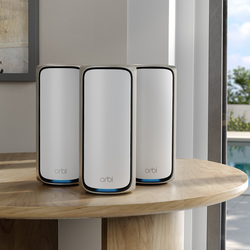The digital age is transforming the way we live, including the introduction of smart home Internet of Things (IoT) devices, appliances, and applications. From coffee makers, thermostats, and even refrigerators, chances are that your household includes WiFi-connected devices that make life easier. However, robust IoT device security is essential to ensure there are no vulnerabilities in your operating systems.
IN THIS ARTICLE
Why is IoT Security Important for Smart Home Networks?
IoT network security is extremely important because smart devices can be entry points for cybercriminals to access personal data or private information on your network. Once hackers gain entry to IoT applications such as security cameras, baby monitors, Bluetooth devices, or other network-connected WiFi web applications, they can potentially access high-value assets or conduct malicious activity with sensitive data on your computer, laptop, iPad, or smartphone.
WiFi technology moves fast, and one of the main challenges for device manufacturers is in making people aware that their smart fridge, smart TV, or microwave oven can be a gateway attack surface for cyber attackers. Developers often use ethical hackers to uncover bugs in the system, but what if your IoT devices and home networks aren’t equipped with adequate protection from security vulnerabilities and cyberattacks? Let’s look at some steps you can take to strengthen your security posture and overcome security challenges.
Securing Your IoT Devices
We have all heard terms such as hackers, malware, ransomware, botnets, DDOS attacks, and other threats to the online ecosystem. Here are some security measures worth taking to ensure your internet connectivity isn’t compromised.
Change Default Credentials during setup
The first step is to change any default passwords and usernames. Make sure to use unique and strong passwords and multi-factor authentication where possible. Attackers often attempt to log in with default credentials or by using large password dictionaries.
Regularly update device firmware
Sometimes IoT device firmware is already outdated by the time you set it up. Manufacturers often release software updates and security fixes. Ensure your IoT devices are set to update automatically or regularly check for firmware updates. This is a preventative measure will help keep your device use free from remote access hackers.
Secure your WiFi network
An unsecured WiFi network is a security issue and a welcome sign for cyber intruders in real-time. Use strong WiFi WPA3 encryption, set a robust WiFi password, use a firewall, and consider network segmentation for your IoT devices, applications, and gadgets. This way, if an IoT device is compromised, it won’t expose your primary laptops and smartphones to the risk of malicious intrusions.
Disable unnecessary features
IoT devices often come with unwanted features that could pose security risks. For example, if you don’t use smart TV voice commands, consider disabling the microphone feature.
Keeping an eye on WiFi IoT devices
You can enhance your home security solutions at the router level to manage, monitor and protect devices from exploitation. NETGEAR Orbi and Nighthawk routers, secured by NETGEAR Armor powered by Bitdefender, proactively blocks malicious traffic, and keeps your network functionality secure. Cyber-security is everyone’s business, from manufacturers to the supply chain and endpoint user. By taking these security best practices seriously, you can enjoy the convenience of your smart device automation without compromising your privacy and security. In the world of IoT, remaining informed and being vigilant is essential for today’s smart homes.




